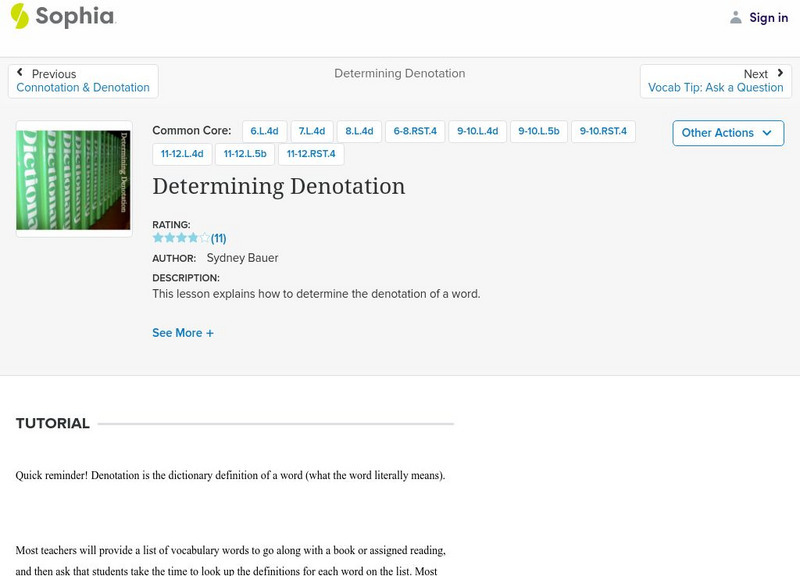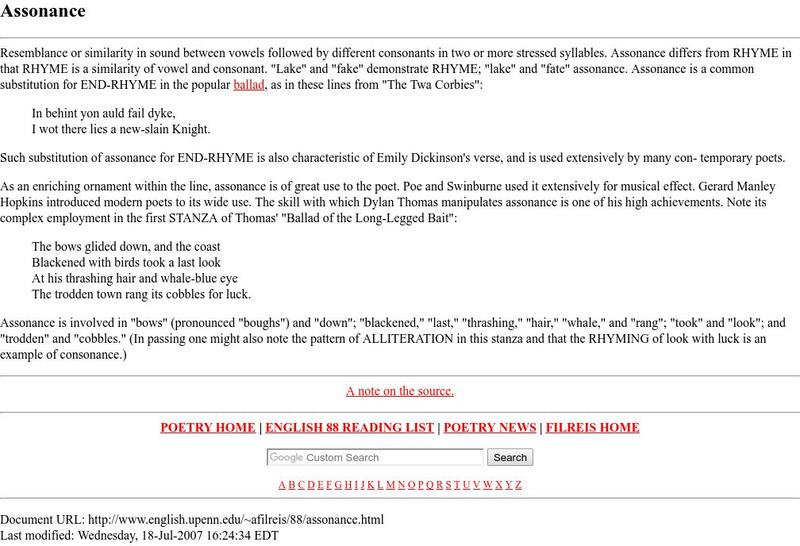University of Victoria (Canada)
The U Vic Writer's Guide: Figures of Thought: Symbol
Learn about symbolism in literature and view examples of this literary technique.
Other
Concepts and Practices for Writing Courses: Interpreting Literature
This tutorial surveys the way readers should interpret literature or text in symbols, syntax, meaning, and the like. The article features a Literary Toolkit for Analyzing Literature.
Quia
Quia: Matching: Literary Devices
This matching game has students match examples of literary devices (yellow boxes) with the terms (blue boxes). There are multiples of each, but each set is matched to a specific box. Java is required.
Virtual Salt
Handbook of Rhetorical Devices: Analogy
Defines analogy. Also explains the reasoning behind the multiple levels of comparisons within an analogy. Includes examples and quotes from famous authors.
Polk Brothers Foundation Center for Urban Education at DePaul University
De Paul University: Center for Urban Education: Can Infer Meaning of a Multiple Meaning [Pdf]
Students will analyze a word in several different sentences. Students will determine the meaning of the same word in several different contexts. Students will also write their own sentences with the same word in several different contexts.
ReadWriteThink
Read Write Think: Finding Figurative Language in the Phantom Tollbooth
Contains plans for four lessons that use The Phantom Tollbooth by Norton Juster to teach about figurative language. In addition to objectives and standards, this instructional plan contains links to handouts and to sites used in the...
Quia
Quia: Concentration: Literary Devices
This game asks students to match literary devices (similes, metaphors, personification, slang/dialect and allusions) with their examples while remembering where they are located behind covered squares. Java is required.
E Reading Worksheets
E Reading Worksheets: Simile Worksheets
This site contains figurative language worksheets that assess students' understanding of similes in the context of sentence. After seeing an example, students will fill in the words that are compared in each simile. In addition, students...
Goshen College
Goshen College: Literary Analysis Guide
This resource not only explains how to analyze a text, but also, provides student examples of literary texts. W.9-10.9b Research/Argum, RI.11-12.5 Evaluate text structure
Study Ladder
Studyladder: Shades of Meaning
Interactive activity to help students differentiate shades of meaning among groups of words.
Grammarly
Grammarly Blog: Idioms and Phrases
An explanation and examples of idioms and how to use context clues to understand their meanings.
Grammarly
Grammarly Blog: Idioms and Their Meanings
An explanation and examples of idioms and their geographic ties.
Other
Lifestream Center: Lessons: Literary Concepts: Elements of a Story
This site offers a basic understanding of the elements of a story. It clearly defines each literary term.
Washington State University
Washington State University: Epigram/epigraph/ Epitaph/epithet
This site gives a definition of the word "epigram." It also includes a few examples of epigrams.
ClassFlow
Class Flow: Figurative Language Review
[Free Registration/Login Required] This lesson helps students understand figurative language.
ClassFlow
Class Flow: Poetry Figurative Language
[Free Registration/Login Required] This flipchart discusses various forms of poetry and gives examples of each. Figurative language is explored as a way of determining the meaning of a piece of literature.
Sophia Learning
Sophia: Personification
Seven slides introducing and providing examples of personification. Slides also explain the purpose and impact of personification within a text, and examples come from "Rappaccini's Daughter" by Nathaniel Hawthorne.
TES Global
Blendspace: Figurative Language & Tone
A twelve-part learning module with links to texts, videos, and websites on figurative language and tone.
Houghton Mifflin Harcourt
Holt, Rinehart and Winston: Elements of Literature: Identifying Figures of Speech [Pdf]
A graphic organizer which allows students to document and list the figures of speech they identify in a given piece of literature. These include simile, metaphor, personification, and symbol, and require examples from the text.
Sophia Learning
Sophia: Determining Denotation
This lesson explains how to determine the denotation of words; it defines denotation and offers a plan of action: look up the word in the dictionary, read all meanings paying attention to parts of speech, and compare each of these...
University of Pennsylvania
University of Pennsylvania: Assonance
This resource provides a detailed explanation of the term "assonance." Several examples provided as well as links to related sites.
PBS
Wnet: Thirteen: I Have a Metaphor
This instructional activity not only examines the message of Dr. King, but also the words themselves. This is a instructional activity in identifying the literary devices that he used in his "I Have a Dream" Speech. It will introduce the...
Texas Education Agency
Texas Gateway: Compare/contrast Themes and Genres in Literary Texts
You will learn how to analyze, make inferences, and draw conclusions about theme and genre in different cultural, historical, and contemporary contexts and provide evidence from the text to support your understanding.
Texas Education Agency
Texas Gateway: Allusions to Mythological, Classical, and Traditional Texts
You will be able to identify and understand allusions in myths, the classics, and other traditional texts and their influence on modern literature.
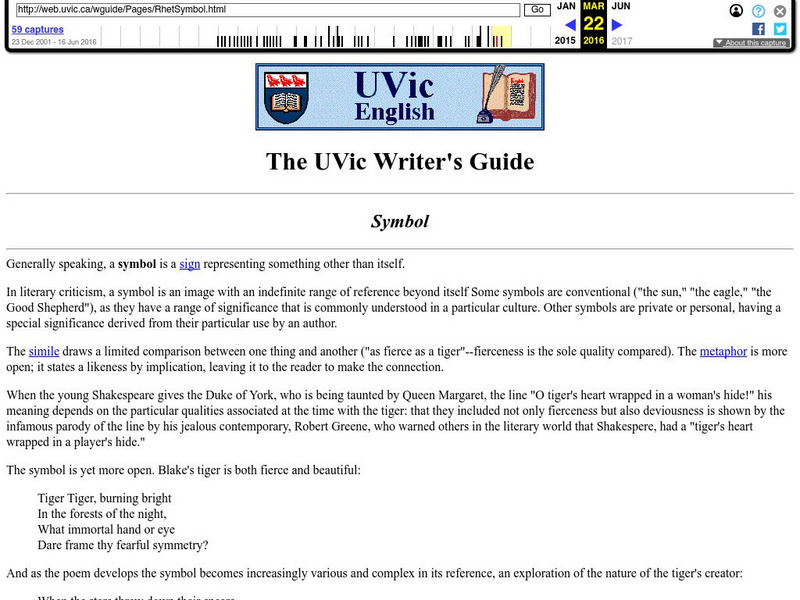



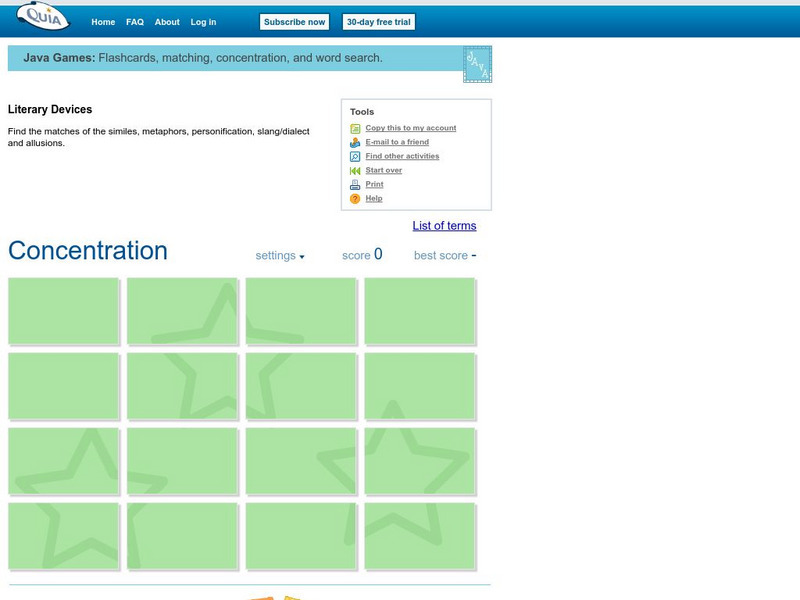

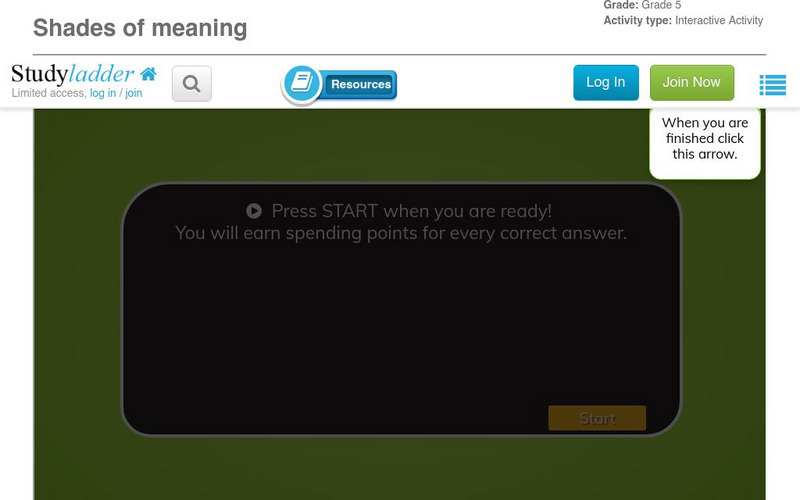
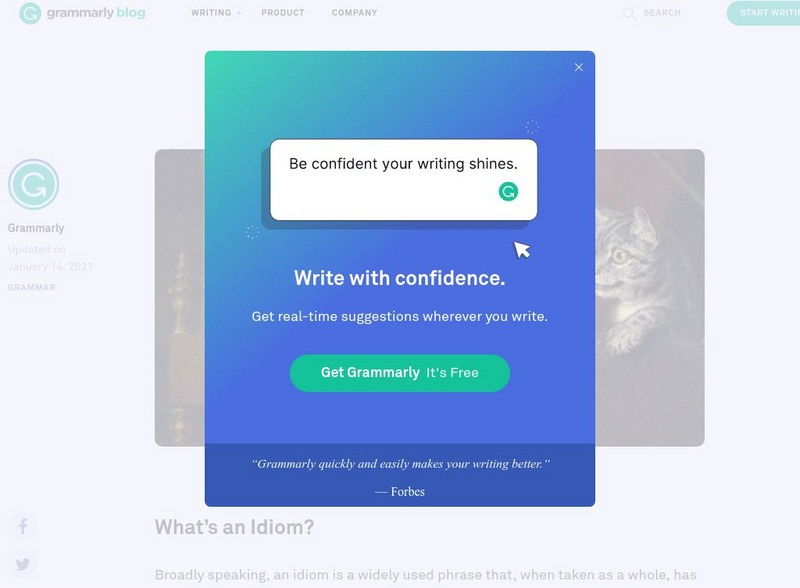





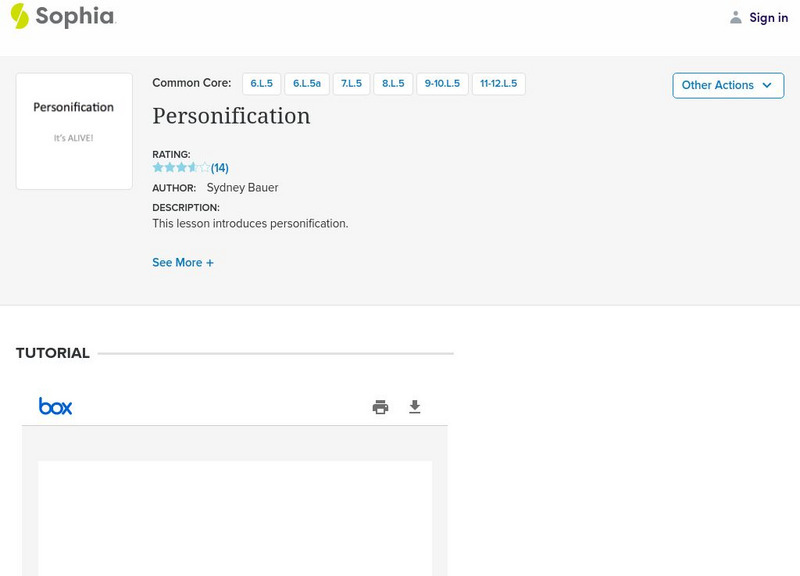

![Holt, Rinehart and Winston: Elements of Literature: Identifying Figures of Speech [Pdf] Graphic Holt, Rinehart and Winston: Elements of Literature: Identifying Figures of Speech [Pdf] Graphic](http://lessonplanet.com/content/resources/thumbnails/410154/large/bwluav9tywdpy2symdiwmduymc0yotywmi1ondh3nneuanbn.jpg?1589985628)
